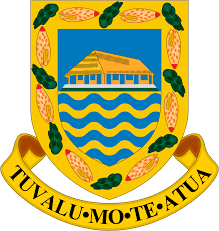History Of Tuvalu
Brief History
Pre-History
Approximately 3000 years ago the Polynesian people began using canoes to traverse and move to islands all over the pacific. The 9 islands we call Tuvalu are all very small, isolated islands
There is little knowledge about the islands of Tuvalu, little archaeological evidence , and no written works. However we do know that different islands did not have regular contact until European contact. However utilizing genetics we know that there were numerous immigration and contact events not only between these islands but between Tuvalu and other island nations like Tonga and Samoa. Despite Tuvalu’s remote location travelers visited theses islands from far off lands.
European contact
In 1568 Spanish sailors found one of Tuvalu's islands, and over the coming centuries Russian, Spanish, British, the Americans and even Peruvian ships made their way to Tuvalu. These interactions resulted in trade, some Tuvaluans left to join chip crews, and upon first contact disease spread through the population.
After first contact, the Spanish explores left, and subsequent visits from other nations would occur on an infrequent basis until 1865-1870 when soman missionaries began spreading the word of god and building churches. On the islands of Tuvalu, the local people would live in dispersed hamlets. Distinct groups would emerge on the same island. Now These missionaries encouraged Tuvaluans to organize in one or two villages per island. Being part of a village meant participating in games, gift-giving, community projects or celebrations.
In 1892 Tuvalu became a British Protectorate until 1916 when it was Established as the Gilbert and Ellice Islands colony. Up until this point, islands operated on their own, but the British fostered community relations between islands. This would culminate in the creation of a Boy's secondary school on the island on Vaitupu. This school would be attended by students from the Gilbert and Ellice Islands. The Gilbert and Ellice Islands included 16 islands, Tuvalu was the Ellice Islands, and the Gilbert Islands are modern day Kiribati.
WW2 / Post-WW2
During the second world war, the Gilbert and Ellice Islands were informally allied with the allies. Japanese forces occupied a 3 of the Gilbert Islands. Later, in October 1942 the United States Marine Core landed Funafuti, the current capital of Tuvalu, along with two other Ellice Islands. Funafuti was the main staging point for two major battles to secure the captured Gilbert Islands. These battle commenced in November of 1943 But Funafuti would continue to be used as an air/sea base until the end of the war.
After the U.S. forces landed on Funafuti, locals assisted soldiers and construction workers in the creation of airstrips and fortifications. After Funafuti was prepared, the locals were moved to to the other Ellice Islands for the duration of the war.
After the war, U.S. forces left the islands, and the runway on Funafuti was developed into Funafuti International Airport. Around this time the newly formed United Nations now sought to decolonize the world, allowing many pacific islands to begin the path to self-determination.
Independence
In 1961, The United Nations Held a Special Committee on Decolonization, giving colonies the right to self-determination. Gilbert and Ellice Islands began creating political parties and sending representatives to draft a constitution and create a government. There were three general elections held, taking place between 1967 and 1974. The Ellice Islands,
 Coat of Arms of Tuvalu
Coat of Arms of Tuvalu
After the 1974 referendum the Ellice islands became a separate British dependency with its own government. The British government then polled the people of the Ellice Islands on secession. A vote was held, if Ellice Islanders wanted to secede from the Gilbert Islands, they would forfeit royalties from phosphate trade on the Gilbert Islands. Despite this, 92% of the population voted to secede. If tuvalu voted to remain part of the Gilbert islands, the larger Gilbert islands would have overshawoded Tuvalu in any decision.
Following this Vote, Tuvalu became an independent constitutional monarchy, and a member of the British commonwealth.
- Check out wikipedia entry on tuvalu for additional facts
"Tuvalu Wiki" - Check out The Encyclopedia Britannica page on tuvalu for additional facts
"Britannica Wiki" - Check out US Relations with tuvalu
"US Relations with Tuvalu"
